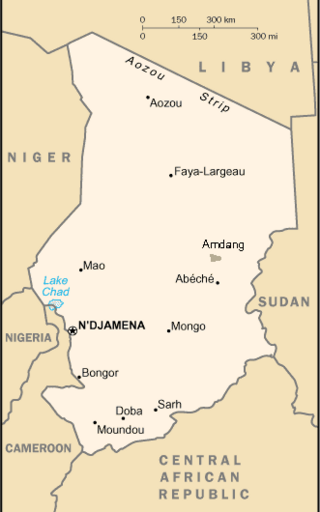
The Mande languages are spoken in several countries in West Africa by the Mandé peoples and include Maninka, Mandinka, Soninke, Bambara, Kpelle, Dioula, Bozo, Mende, Susu, and Vai. There are "60 to 75 languages spoken by 30 to 40 million people", chiefly in Burkina Faso, Mali, Senegal, the Gambia, Guinea, Guinea-Bissau, Sierra Leone, Liberia, and Ivory Coast, and also in northwestern Nigeria and northern Benin.

Amdang is a language closely related to Fur, which together constitute a branch of the Nilo-Saharan language family. It is mainly spoken in Chad, north of the town of Biltine, and sporadically elsewhere in Ouaddaï Region. There are also small colonies of speakers in Darfur near Woda'a and Fafa, and in Kordofan in the Abu Daza district and at Magrur north of Bara. Most of the ethnic group now speaks Arabic.
The Bua languages are a subgroup of the Mbum–Day subgroup of the Savanna languages spoken by fewer than 30,000 people in southern Chad in an area stretching roughly between the Chari River and the Guéra Massif. They were labeled "G13" in Joseph Greenberg's Adamawa language-family proposal. They are ultimately part of the Niger–Congo family, and have exerted a significant influence on Laal.

The Niellim language is a Bua language spoken by some 5,000 people along the Chari River in southern Chad. It is mainly spoken in two areas: one around the city of Sarh and one, its traditional home, further north, between about 9°30′ and 9°50′ N, corresponding to the former chiefdoms of Pra, Niellim, and Niou.
The Gula Iro language is a Bua language spoken by some 3,500 people north and east of Lake Iro in southern Chad, between the Bola and Salamat rivers. It has four dialects, according to Pairault:
Day is an Adamawa language of southern Chad, spoken by 50,000 or so people southeast of Sarh. Ethnologue reports that its dialects are mutually intelligible, but Blench (2004) lists Ndanga, Njira, Yani, Takawa as apparently separate languages.
Zaghawa is a Saharan language spoken by the Zaghawa people of east-central Chad and northwestern Sudan (Darfur). The people who speak this language call it Beria, from Beri, the endonym of the Zaghawa people, and a, Zaghawa for "mouth". It has been estimated that there are between 750,000 native Zaghawa speakers, who primarily live in Chad and the Darfur region of Sudan.
Bidiyo is an Afro-Asiatic language spoken in south central Chad.
Dangaléat is an Afro-Asiatic language spoken in central Chad. Speakers make up the majority of the population of Migami Canton in Mongo, Chad.
Migaama is an Afro-Asiatic language spoken in central Chad. Speakers make up the majority of the population of Bang Bang, Chad.
Mogum is an Afro-Asiatic language spoken in south central Chad. Speakers are found in Sorki canton in Chinguil sub-prefecture.
Ubi is an Afro-Asiatic language spoken in central Chad.
Birgit is an Afro-Asiatic language spoken in southeastern Chad. Speakers are found in Moubi Goz Canton, Kouka Margni Sub-prefecture and in Moubi Zarga Canton, Mangalmé Sub-prefecture.
Kajakse is an Afro-Asiatic language spoken in eastern Chad.
Masmaje is an Afro-Asiatic language spoken in central Chad. There are speakers in Moubi Hadaba Canton, Bitchotchi Sub-prefecture.
Mubi is an Afro-Asiatic language spoken in central Chad. It forms one of the Mubi languages, a group of East Chadic languages.
Barein is a Chadic language spoken in south central Chad.
Saba is an Afro-Asiatic language spoken in south central Chad. Speakers are found in Sorki canton in Chinguil sub-prefecture.
Sokoro is an Afro-Asiatic language spoken in central Chad. Dialects are Bedanga and Sokoro. Speakers make up the majority of the population of Gogmi Canton in Melfi, Chad.
Mokilko, or Mukulu, is a Chadic language spoken in central Chad. The local name for the language is Gergiko. This is the name used for mother-tongue literacy materials. Mukulu is the name of a village.


